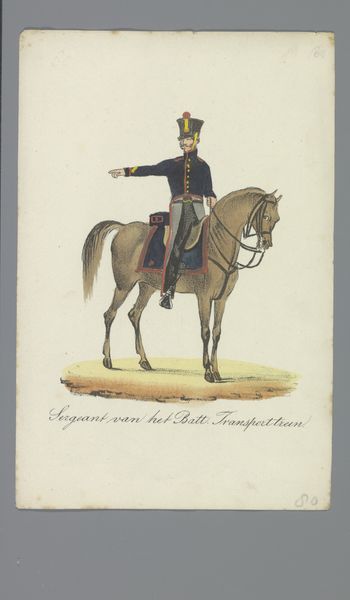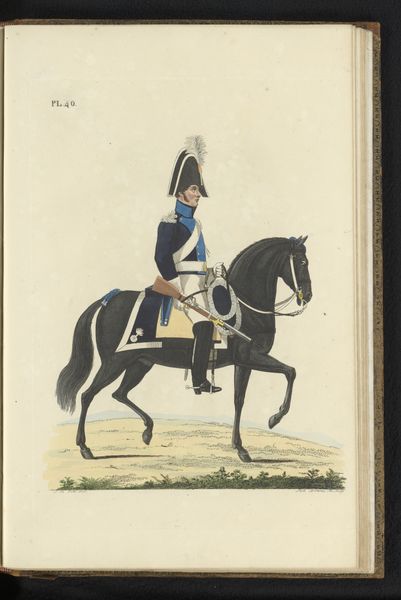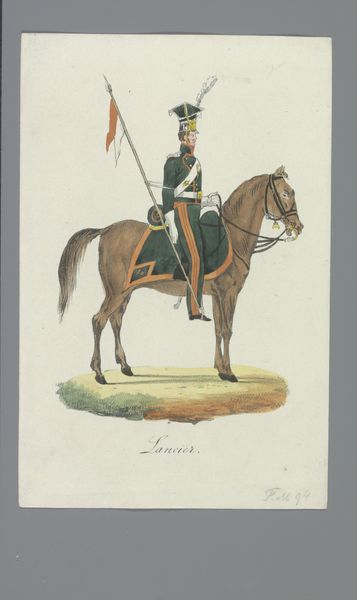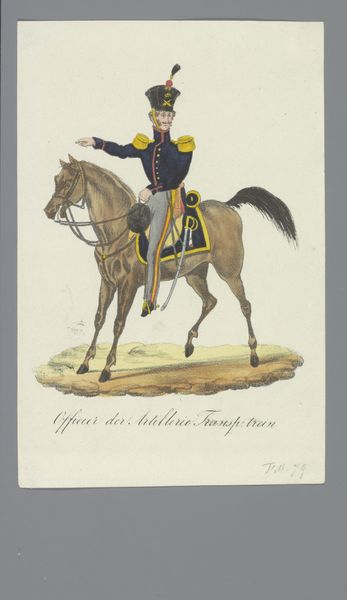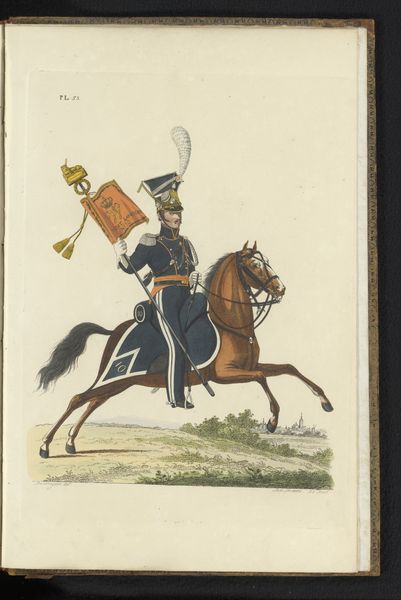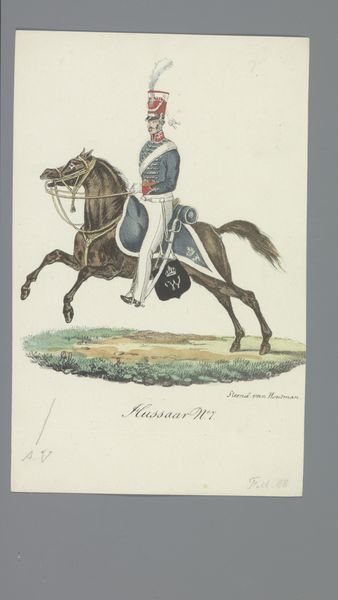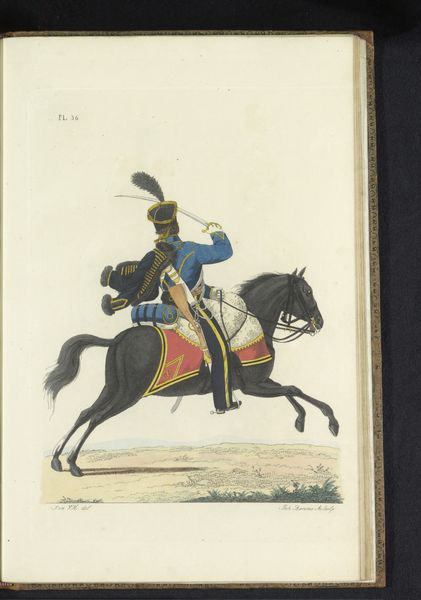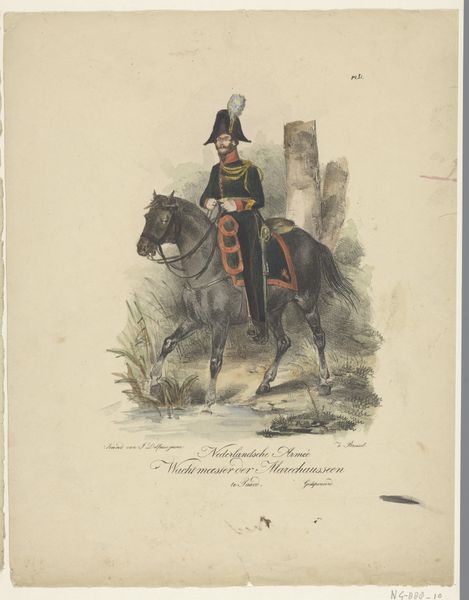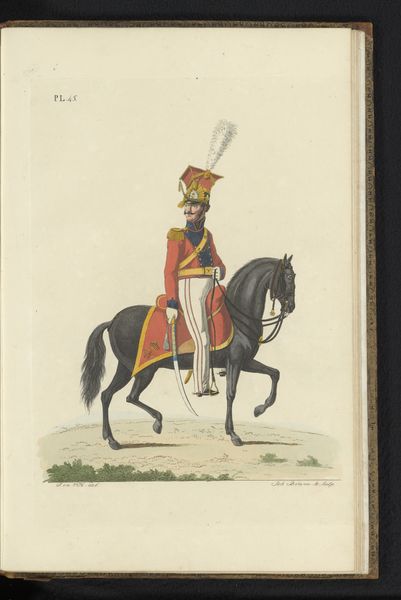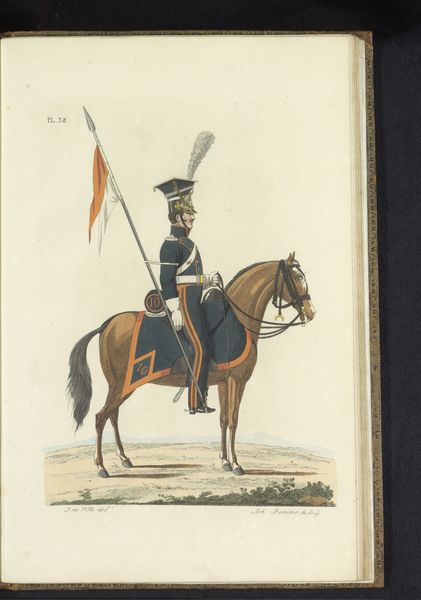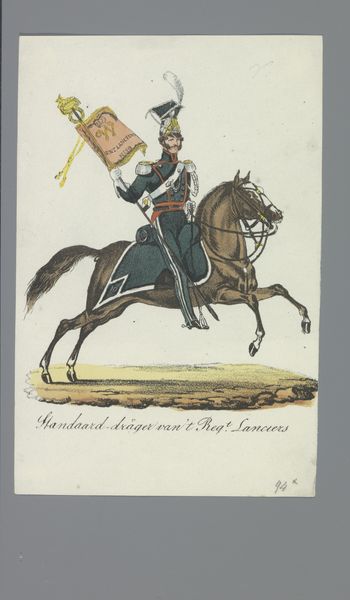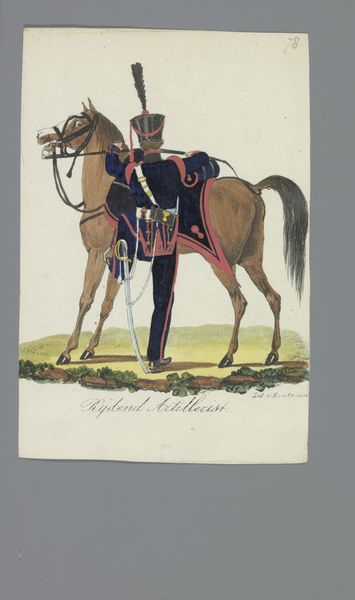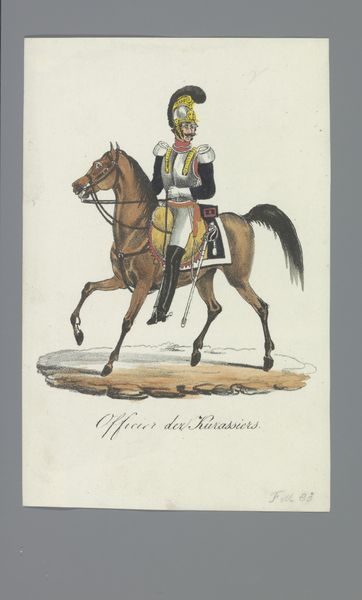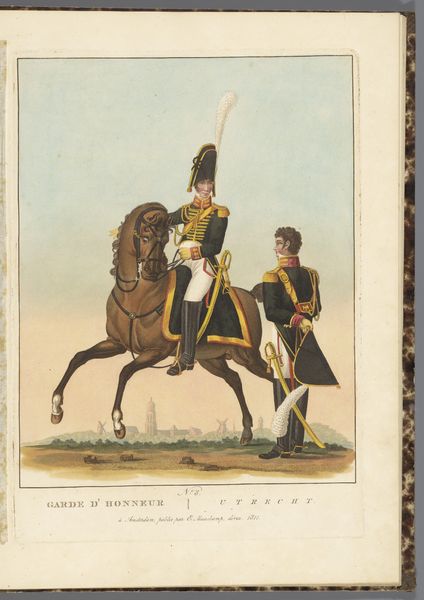
drawing, coloured-pencil, paper, watercolor
#
portrait
#
drawing
#
coloured-pencil
#
water colours
#
landscape
#
figuration
#
paper
#
watercolor
#
coloured pencil
#
costume
#
genre-painting
#
academic-art
Dimensions: height 170 mm, width 110 mm
Copyright: Rijks Museum: Open Domain
Curator: This piece is called "Lancier," created between 1835 and 1850, and currently residing here at the Rijksmuseum. It's a drawing using watercolor and colored pencil on paper, made by Albertus Verhoesen. As the title suggests, it depicts a lancer, a type of cavalry soldier. Editor: My first impression is this has real storybook charm! It feels quite formal but also slightly… dreamlike. The colors are muted, but the uniform details are so precise, like a meticulously crafted toy soldier on a slightly faded page. Curator: Indeed, the precision speaks to its time. We should consider the political backdrop. Europe, during the period between 1815 and 1914, experienced relative peace but saw increased production of military uniforms as potent symbols of state power. The lancer, in his full regalia, would have embodied ideas of order, discipline, and perhaps even national identity. Editor: I hadn’t thought of that, but the uniform is so ornate it feels almost performative, like this lancer is starring in his own little pageant. Does his uniform reveal clues about his social status? The quality of the dyes, for instance? Curator: Absolutely. Color production and fabric were highly regulated industries that would allow the trained eye to determine social class and also offer some insight into trade and other materials of importance during that time. The bright colors and elaborate detailing suggests a higher rank, maybe a junior officer? Beyond mere class, the lancer's garb would have been very revealing about ethnicity, religion, national identity and military ranking in the Netherlands, which are powerful notions still worth considering today. Editor: This image triggers the sense that this person may have gone off to battle, perhaps never returned to their home. It gives me the feels, do you know what I mean? It's got that quiet sadness. Curator: I think you've articulated something quite important about genre-painting as a site to examine emotions of the human spirit that extend beyond one individual to speak to communities touched by experiences of war, sacrifice and social change. Editor: Right. It really does connect us, across all this time! Curator: Precisely. Albertus Verhoesen allows us to connect emotionally but also contextualizes ideas and social forces that continue to influence us even now.
Comments
No comments
Be the first to comment and join the conversation on the ultimate creative platform.
